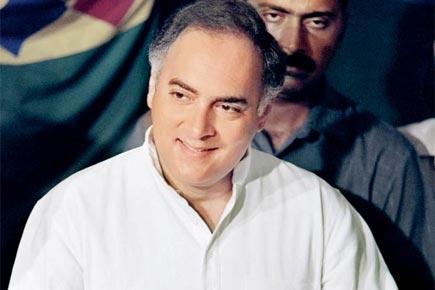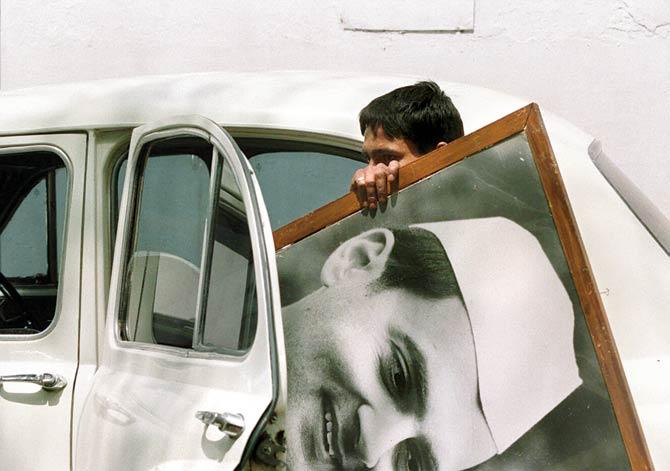Senior journalist Neena Gopal's retelling of late Prime Minister Rajiv Gandhi’s last moments before his assassination, and its aftermath, makes for a gripping read

![]() As the car in which we were travelling hit yet another pothole, a group of slogan-shouting supporters tried to grab him through the open window. He was even lit up like a beacon, with a light fixture above the windscreen focused directly on him. There was little doubt that at one level, Rajiv Gandhi saw the mass hysteria wherever he went as a sign of his immense popularity, as a vindication that the people still loved him and that he remained his party’s main vote-catcher. But at some level, he was concerned. While nobody could have predicted that his life would be snuffed out just like that only minutes later, he had an almost prescient premonition of his own death.
As the car in which we were travelling hit yet another pothole, a group of slogan-shouting supporters tried to grab him through the open window. He was even lit up like a beacon, with a light fixture above the windscreen focused directly on him. There was little doubt that at one level, Rajiv Gandhi saw the mass hysteria wherever he went as a sign of his immense popularity, as a vindication that the people still loved him and that he remained his party’s main vote-catcher. But at some level, he was concerned. While nobody could have predicted that his life would be snuffed out just like that only minutes later, he had an almost prescient premonition of his own death.
In pictures - Remembering Rajiv Gandhi: Rare images of former Prime Minister of India
ADVERTISEMENT

A youth shown in a photo dated 22 May 1991 removing a campaign poster of assassinated former Indian Prime Minister Rajiv Gandhi from the residence of the slain leader in the Indian capital. PICs/AFP
Unsettled by the complete absence of security — no gunman would have been able to protect him, had someone lunged at him through the open window with a knife or taken a shot at him — I had asked him, pointedly, whether he felt his life was at risk, more so now that there was absolutely no security beyond the one token bodyguard, who was, incidentally, in another car.

National Congress leader Rajiv Gandhi casts his ballot, on May 20, 1991 at a polling station in New Delhi for the first round of the general election. This was a day before he was assassinated
Rajiv Gandhi responded with a counter-question: ‘Have you noticed how every time any South Asian leader of any import rises to a position of power or is about to achieve something for himself or his country, he is cut down, attacked, killed...look at Mrs [Indira] Gandhi, Sheikh Mujib, look at Zulfikar Ali Bhutto, at Zia-ul-Haq, Bandaranaike...’

A photo dated May 24, 1991 where Sonia Gandhi (C), daughter Priyanka (second, right) and son Rahul (second left), turn to chanting mourners during Rajiv Gandhi’s funeral at Shakti Sthal on the banks of the River Yamuna in New Delhi
Within minutes of making that bone-chilling prophetic statement that hinted there were dark forces at work and that he knew he was a target, Rajiv Gandhi himself would be gone.
As we turned off the main road, there was a mandatory burst of welcoming firecrackers. We had stopped on a slope on slightly higher ground and had walked down the approach, a few hundred yards or so to the open space in front of the main temple at Sriperumbudur, where a red carpet had been laid out. Stepping out from the front seat, Rajiv Gandhi had said, ‘Come, come, follow me,’ and I had demurred, walking to the back and around and then to the front of the car so I could have a bird’s-eye view of the venue, without having to deal with the throng. ‘I have one more question,’ I had said. ‘I’ll wait for you here.
A bomb, a suicide bomber, let alone the first female suicide bomber on Indian soil, was the last thing on anyone’s mind as Rajiv Gandhi plunged into the crowd of supporters on his way to the podium at the far side of the ground, shaking hands, smiling warmly, as was his wont, at everyone who reached out to him. But as the huge explosion went off a few minutes later and I, standing about ten steps away, felt what I later realised was blood and gore from the victims splatter all over my arms and my white sari, a nameless dread took hold — something terrible had happened to the man I had just been talking with.
The last time I had followed Rajiv Gandhi into a crowd had been exactly two years earlier, in 1989, in Kalwakurthy, the constituency of the Andhra Pradesh chief minister, the larger-than-life NT Rama Rao, where Rajiv Gandhi was set to campaign.
Back then, we had driven in what had seemed like an endless 100-car cavalcade, complete with Black Cat commandos and top security, all the way from Hyderabad to the venue. As I got out to follow Rajiv Gandhi, a wave of people converged around the Congress leader who was surrounded by bodyguards, even as I was knocked into a narrow little ditch. Unable to move for several minutes, and out for the count, I sensed rather than saw dozens of people jumping over me.
This time, I was deeply reluctant to follow Rajiv Gandhi into the crowd.
At Sriperumbudur, he had no such compunctions. Minutes after he walked unhesitatingly into the crowd, there was a deafening sound as the bomb spluttered to life and exploded in a blinding flash. Everything changed.
A moment that, in my head, will always be frozen in time. It was exactly 10.21 pm.
On 24 May, the nation stayed riveted to television screens as the funeral, attended by dignitaries from over sixty countries, was telecast live. The mortal remains of Rajiv Gandhi were consigned to flames on the banks of the Yamuna; his stoic son, Rahul, and daughter, Priyanka, the cynosure of all eyes.
Days later, I received a call from the Indian embassy in Abu Dhabi. Rajiv Gandhi’s widow had sent a message asking me to meet her at their New Delhi home at 10, Janpath. I flew to Delhi on 31 May and, as I walked from the Congress party office to the pathway that led to the house that Rajiv Gandhi had called home, alongside the Gandhi man-Friday V George, I was accosted by several senior Congressmen, saying I must find out at any cost, whether Sonia Gandhi would lead the Congress party!
Inside, in a room lined with books and a long table where Rajiv Gandhi had often been photographed confabulating with his cabinet, was Sonia Gandhi, her face devoid of make-up, a far cry from the beautifully coiffed creature whom I had met on her visit to Dubai a few months ago. She reached across, held both my hands in hers and said, ‘Tell me everything, tell me what he said, what mood was he in, what were his last moments like. I want to hear it from you, every tiny detail. Was he happy, was he tense, what were his last words...’
Tears streaming down her cheeks — I realised, mine too — and still holding on to my hands, she listened as I recounted the last forty-five minutes of India’s youngest prime minister’s life; his unexpected death closing the chapter on India’s all too brief Camelot.
Excerpt from Neena Gopal’s The Assassination of Rajiv Gandhi published with permission from Penguin India.
 Subscribe today by clicking the link and stay updated with the latest news!" Click here!
Subscribe today by clicking the link and stay updated with the latest news!" Click here!







